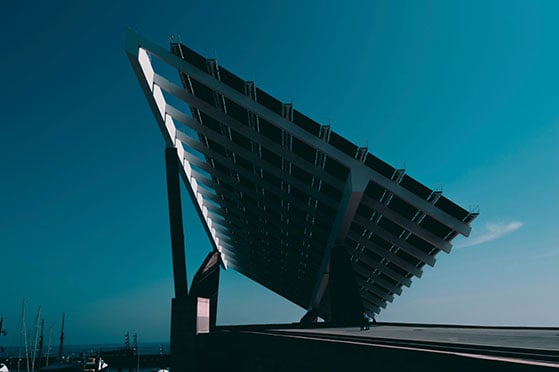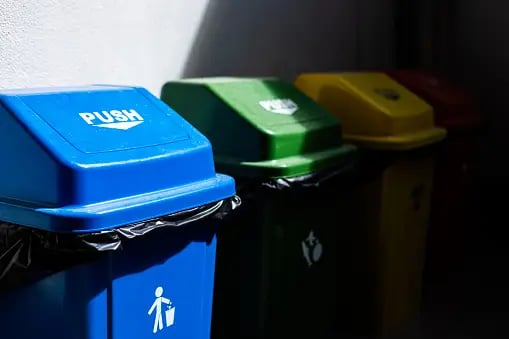When a nation built on oil wealth decides to put billions into green finance, you know the game is changing.
Qatar just launched a $2.5 billion green bond fund, and it’s aiming that capital squarely at renewable energy, low-carbon infrastructure, and eco-friendly real estate.
This isn’t just about ticking ESG boxes — it’s a calculated move to reposition Qatar in a rapidly shifting global economy, where sustainability is no longer optional.
From Hydrocarbons to a Low-Carbon Future
For decades, Qatar’s prosperity has been rooted in its status as a leading exporter of natural gas and oil. But as the world accelerates towards net zero, even energy-rich nations are under pressure to diversify.
Qatar’s National Vision 2030 already lays out a blueprint for economic diversification, environmental stewardship, and social development. This new green bond fund is the financing muscle to make that vision a reality.
By aligning with global ESG investment trends — a market expected to top $53 trillion by 2025 — Qatar isn’t just adapting to the future, it’s positioning itself as a regional sustainability leader.
The Smart City Showcase
This fund will give a major boost to two standout urban developments that are already turning heads in the sustainability world:
- Lusail City – Spanning 38 square kilometres, Lusail is designed from the ground up as a smart, sustainable urban ecosystem. It’s built with AI-powered transport systems, energy-efficient buildings, and integrated data infrastructure to optimise resources.
- Msheireb Downtown Doha – An ambitious regeneration project that blends heritage architecture with modern sustainability. Smart lighting, automated climate controls, and water-saving systems have already slashed energy usage by 30%.
These cities aren’t just about looking good — they’re about building climate resilience into urban living and proving that Gulf megaprojects can be both luxurious and sustainable.
Why $2.5B Matters
In the grand scheme of global climate finance, $2.5 billion might not sound monumental — but in the context of the GCC, it’s a clear signal of intent.
Historically, much of the region’s mega-project financing has gone into fossil fuel infrastructure or traditional real estate. Redirecting capital into green bonds means future-proofing the economy and building investor confidence in Qatar’s sustainability credentials.
And there’s an upside for the private sector: green bonds often lower the cost of capital for ESG-aligned projects, opening the door for developers, utilities, and innovators to secure funding for climate-positive initiatives.
The Roadblocks Ahead
Of course, ambition comes with challenges:
- Construction Costs – At roughly $2,096 per square metre, Doha’s building costs are the second highest in the Middle East. This makes large-scale sustainable builds more expensive to deliver.
- Supply Chain & Labour Pressures – The regional talent pool is already stretched, with Saudi Arabia’s massive infrastructure push for the 2034 FIFA World Cup intensifying competition for resources.
- Execution Risk – Transforming plans into functioning, measurable ESG outcomes requires strong governance and reporting — areas that often trip up large-scale initiatives.
As Michael Brady from Turner & Townsend Qatar warns: “Integrating sustainability now is essential — wait too long, and regulation will force you to retrofit at higher costs.”
Building the Financial Backbone for ESG
This isn’t a one-off announcement — it’s part of a coordinated financial shift.
- The Qatar Central Bank’s Sustainable Finance Framework now applies to all financial institutions, encouraging capital flows into projects that meet ESG criteria.
- The Qatar Financial Centre introduced sustainable bond and sukuk standards back in 2022, laying the groundwork for this fund.
- Combined, these measures aim to draw up to $75 billion in ESG investments by 2030.
This is a clear signal to global investors: Qatar wants your climate capital — and it’s ready to offer the structures to protect it.
Why This Is Bigger Than Qatar
Moves like this have a ripple effect across the Gulf and beyond. If Qatar’s green bonds prove successful — attracting foreign investment, creating jobs, and meeting sustainability targets — other GCC countries will be under pressure to follow suit.
For investors, it’s a fresh frontier where climate goals and financial returns could align.
For developers and real estate leaders, it’s a green light to build ESG into projects from day one.
For policymakers, it’s proof that sustainable finance can be a growth engine, not just a compliance exercise.
The Rio AI Take
At Rio AI, we see Qatar’s $2.5B green bond fund as more than a headline — it’s a case study in strategic climate positioning.
When a hydrocarbon powerhouse pivots to funding renewables, sustainable cities, and climate-ready infrastructure, it’s a wake-up call for the rest of the market: The race for sustainable investment is on — and if you’re not aligning your capital strategy now, you’re already falling behind.
What do you think?
Will Qatar’s $2.5B move ignite a sustainability arms race across the GCC, or will challenges slow the momentum?
Share your thoughts below — we’ll be tracking this story closely.






